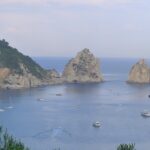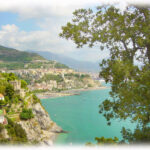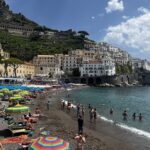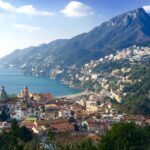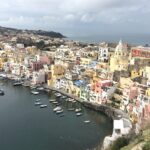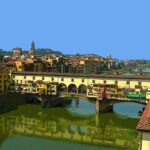When you get Paestum, you suddenly be amazed by the very well-preserved city walls of almost 5 Km that still surround the urban core and would have originally been 7 mt high. Along the walls there are four main gates situated at the compass directions: Porta Sirena to the east; Porta Giustizia to the south; Porta Marina to the west and Porta Aurea to the north.
History of Paestum
Today it’s a UNESCO Heritage site. Once called Poseidonia, the city was founded in the VII century BC by Greeks colonists from Sybaris and it would has probably occupied by a human settlement when they got there. During Greek occupation the city achieved its greatest heights before to fall in Lucanians’ hands (who changed the name with Paiston) and later under Rome control.
It turned the name in Paestum once and for all when it was taken by Rome in BC 273 and continued to prosper until the mouth of river Salso started to be buried by sand and the whole place turned into a swamp, according to Strabo. The more the swamp got bigger the closer the urban settlement pull back to Ceres temple until citizens left the place for good in the IX century AD.
Paestum, what you can see
You can fill your lungs with almost 3000 years of history simply by walking through Via Sacra. It was brought back to the world in 1903. It’s thirty feet wide and paved with big blocks of limestone. Public areas and sacred places can be found on both sides of the street as well as buildings of residential areas and the roman paved road matching the ancient Greek path. Forum area was rehabbed during the Roman period: it’s rectangular and surrounded by many other buildings aimed to public life and religious custom.
To the north side of Forum there’s the so-called Italicum Temple which probably was the Capitolium of the city during Roman time. It’s an esastylium temple placed on a high podium at the top of few wide stone steps, equipped with one altar only.
Temples of Paestum
Sacred area is certainly the place that amazes visitors the most: three temples in Greek Doric order stayed up til now as well-preserved as by some miracle. Two of them were devoted to Hera and one to Athena.
Must be mentioned the sanctuary of Hera aimed to an ancient religious cult – which is told to be started by Argonauts – played outside the walls near the mouth of river Sele and the several necropolis outside the city walls.
